Texas Instruments LMC6482IM/NOPB Bedienungsanleitung
Texas Instruments
Nicht kategorisiert
LMC6482IM/NOPB
Lies die bedienungsanleitung für Texas Instruments LMC6482IM/NOPB (42 Seiten) kostenlos online; sie gehört zur Kategorie Nicht kategorisiert. Dieses Handbuch wurde von 31 Personen als hilfreich bewertet und erhielt im Schnitt 4.2 Sterne aus 16 Bewertungen. Hast du eine Frage zu Texas Instruments LMC6482IM/NOPB oder möchtest du andere Nutzer dieses Produkts befragen? Stelle eine Frage
Seite 1/42

3V
0V
C001
A1 0.18 V ±
500mV 50 s
3V
0V
C002
A2 0.18 V ±
500mV 50 s
Product
Folder
Order
Now
Technical
Documents
Tools &
Software
Support &
Community
An IMPORTANT NOTICE at the end of this data sheet addresses availability, warranty, changes, use in safety-critical applications,
intellectual property matters and other important disclaimers. PRODUCTION DATA.
LMC6482
SNOS674G – NOVEMBER 1997 – REVISED APRIL 2020
LMC6482 CMOS Dual Rail-to-Rail Input and Output Operational Amplier
1
1 Features
1• Specications are typical unless otherwise noted
• Rail-to-rail input common-mode voltage range
(specied over temperature)
• Rail-to-rail output swing (within 20-mV of supply
rail, 100-k load)Ω
• Specied 3-V, 5-V, and 15-V performance
• Excellent CMRR and PSRR: 82 dB
• Ultra-low input current: 20 fA
• High voltage gain (RL = 500 k ): 130 dBΩ
• Specied for 2-k and 600- loadsΩ Ω
• Power-good output
• Packages: PDIP, SOIC, and VSSOP
2 Applications
•Data acquisition (DAQ)
•Currency counter
•Oscilloscope (DSO)
•Intra-DC interconnect (METRO)
•Macro remote radio unit (RRU)
•Multiparameter patient monitor
•Merchant telecom rectiers
•Train control and management
•Process analytics (pH, gas, concentration, force,
and humidity)
•Three phase UPS
• Improved replacement for TLC272, TLC277
3 Description
The LMC6482 device provides a common-mode
range that extends to both supply rails. This rail-to-rail
performance combined with excellent accuracy, due
to a high CMRR, makes this device unique among
rail-to-rail input ampliers. The device is an excellent
choice for systems, such as data acquisition, that
require a large input signal range. The LMC6482 is
also an excellent upgrade for circuits using limited
common-mode range ampliers, such as the TLC272
and TLC277.
Maximum dynamic signal range is provided in low
voltage and single supply systems by the rail-to-rail
output swing of the LMC6482. The rail-to-rail output
swing is maintained for loads down to 600 of theΩ
device. Specied low-voltage characteristics and low-
power dissipation make the LMC6482 a great choice
for battery-operated systems.
The LMC6482 is available in 8-pin PDIP and SOIC
packages. The device is also available in a VSSOP
package, almost half the size of a SOIC-8 device.
See the for a quad CMOS operationalLMC6484
amplier with these same features.
Device Information(1)
PART NUMBER PACKAGE BODY SIZE (NOM)
LMC6482
SOIC (8) 4.90 mm × 3.91 mm
VSSOP (8) 3.00 mm × 3.00 mm
PDIP (8) 9.81 mm × 6.35 mm
(1) For all available packages, see the package option addendum
at the end of the data sheet.
Rail-to-Rail Input Rail-to-Rail Output

2
LMC6482
SNOS674G – NOVEMBER 1997 – REVISED APRIL 2020
www.ti.com
Product Folder Links: LMC6482
Submit Documentation Feedback Copyright © 1997–2020, Texas Instruments Incorporated
Table of Contents
1 Features .................................................................. 1
2 Applications ........................................................... 1
3 Description ............................................................. 1
4 Revision History..................................................... 2
5 Pin Conguration and Functions ......................... 3
6 Specications......................................................... 3
6.1 Absolute Maximum Ratings ...................................... 3
6.2 ESD Ratings.............................................................. 4
6.3 Recommended Operating Conditions....................... 4
6.4 Thermal Information.................................................. 4
6.5 Electrical Characteristics for V+= 5 V....................... 4
6.6 Electrical Characteristics for V+= 3 V....................... 7
6.7 Typical Characteristics.............................................. 9
7 Detailed Description ............................................ 18
7.1 Overview ................................................................. 18
7.2 Functional Block Diagram ....................................... 18
7.3 Feature Description................................................. 18
7.4 Device Functional Modes........................................ 19
8 Application and Implementation ........................ 20
8.1 Application Information............................................ 20
8.2 Typical Applications ............................................... 22
9 Power Supply Recommendations...................... 28
10 Layout................................................................... 28
10.1 Layout Guidelines ................................................. 28
10.2 Layout Example .................................................... 28
11 Device and Documentation Support ................. 30
11.1 Receiving Notication of Documentation Updates 30
11.2 Support Resources ............................................... 30
11.3 Trademarks ........................................................... 30
11.4 Electrostatic Discharge Caution............................ 30
11.5 Glossary ................................................................ 30
12 Mechanical, Packaging, and Orderable
Information ........................................................... 30
4 Revision History
NOTE: Page numbers for previous revisions may dier from page numbers in the current version.
Changes from Revision F (April 2020) to Revision G Page
• Deleted old note 4 from Electrical Characteristics for V+= 5 V table. ................................................................................... 4
Changes from Revision E (April 2015) to Revision F Page
• Changed junction temperature max value from –85°C to 85°C (typo) in table..........Recommended Operating Conditions 4
Changes from Revision D (March 2013) to Revision E Page
• Added section, table, section,Pin Conguration and Functions ESD Ratings Feature Description Device Functional
Modes Application and Implementation Power Supply Recommendations Layout Device, section, section, section,
and Documentation Support Mechanical, Packaging, and Orderable Informationsection, and section .............................. 1
Changes from Revision C (March 2013) to Revision D Page
• Changed layout of National Semiconductor Data Sheet to TI format .................................................................................. 27

3
LMC6482
www.ti.com
SNOS674G – NOVEMBER 1997 – REVISED APRIL 2020
Product Folder Links: LMC6482
Submit Documentation FeedbackCopyright © 1997–2020, Texas Instruments Incorporated
5 Pin Conguration and Functions
D, DGK, and P Packages
8-Pin SOIC, VSSOP, and PDIP
Top View
Pin Functions
PIN TYPE DESCRIPTION
NO. NAME
1 OUTPUT A O Output for Amplier A
2 INVERTING INPUT A I Inverting input for Amplier A
3 NONINVERTING INPUT A I Noninverting input for Amplier A
4 V–P Negative supply voltage input
5 NONINVERTING INPUT B I Noninverting input for Amplier B
6 INVERTING INPUT B I Inverting input for Amplier B
7 OUTPUT B O Output for Amplier B
8 V+P Positive supply voltage input
(1) Stresses beyond those listed under may cause permanent damage to the device. These are stress ratingsAbsolute Maximum Ratings
only, which do not imply functional operation of the device at these or any other conditions beyond those indicated under Recommended
Operating Conditions. Exposure to absolute-maximum-rated conditions for extended periods may aect device reliability.
(2) If Military/Aerospace specied devices are required, please contact the TI Sales Oce/Distributors for availability and specications.
(3) Limiting input pin current is only necessary for input voltages that exceed absolute maximum input voltage ratings.
(4) Applies to both single-supply and split-supply operation. Continuous short circuit operation at elevated ambient temperature can result in
exceeding the maximum allowed junction temperature of 150°C. Output currents in excess of ±30 mA over long term may adversely
aect reliability.
(5) Do not short circuit output to V
+, when V+is greater than 13 V or reliability will be adversely aected.
(6) The maximum power dissipation is a function of T
J(max), RθJA , and T
A. The maximum allowable power dissipation at any ambient
temperature is PD= (TJ(max) −TA)/θJA. All numbers apply for packages soldered directly into a PC board.
6 Specications
6.1 Absolute Maximum Ratings
over operating free-air temperature range (unless otherwise noted)(1) (2)
MIN MAX UNIT
Dierential input voltage ±Supply Voltage
Voltage at input/output pin (V
−) – 0.3 (V+) + 0.3 V
Supply voltage (V+−V−) 16 V
Current at input pin (3) −5 5 mA
Current at output pin(4) (5) –30 30 mA
Current at power supply pin 40 mA
Lead temperature (soldering, 10 sec.) 260 °C
Junction temperature (6) 150 °C
Tstg Storage temperature –65 150 °C
Produktspezifikationen
| Marke: | Texas Instruments |
| Kategorie: | Nicht kategorisiert |
| Modell: | LMC6482IM/NOPB |
| Breite: | 5 mm |
| Tiefe: | 3.98 mm |
| Höhe: | 1.5 mm |
| Betriebstemperatur: | -40 - 85 °C |
| Verpackungsbreite: | 8 mm |
| Verpackungstiefe: | 495 mm |
| Verpackungshöhe: | 4.064 mm |
| Typ: | Operationsverstärker |
| Menge pro Packung: | 95 Stück(e) |
| Verpackungsart: | SOIC |
| Anzahl Kanäle: | 2 Kanäle |
| Temperaturbereich bei Lagerung: | -65 - 150 °C |
| THD, totalklirren: | 0.01 % |
| Anzahl Pins: | 8 |
| Bandbreite: | 1.5 MHz |
| Breite (mit Pins): | 5 mm |
| Tiefe (mit Pins): | 6.19 mm |
| Höhe (mit Pins): | 1.75 mm |
| Unterdrückungsverhältnis der Stromversorgung (PSRR): | 82 dB |
Brauchst du Hilfe?
Wenn Sie Hilfe mit Texas Instruments LMC6482IM/NOPB benötigen, stellen Sie unten eine Frage und andere Benutzer werden Ihnen antworten
Bedienungsanleitung Nicht kategorisiert Texas Instruments

6 Oktober 2024

4 Oktober 2024

28 September 2024

23 September 2024

18 September 2024

17 September 2024

13 September 2024

12 September 2024

10 September 2024

4 September 2024
Bedienungsanleitung Nicht kategorisiert
- HN-Power
- Milectric
- OvisLink
- CSFG
- JCB
- Dynacord
- Champion
- Harvia
- Aduro
- Rainbow
- Flexson
- Ikan
- Savage Bros.
- Gosund
- Newport Brass
Neueste Bedienungsanleitung für -Kategorien-
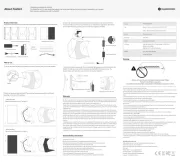
31 Juli 2025

31 Juli 2025
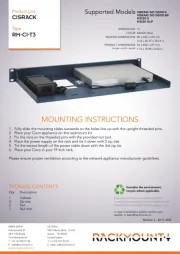
31 Juli 2025

31 Juli 2025
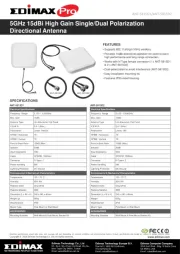
31 Juli 2025
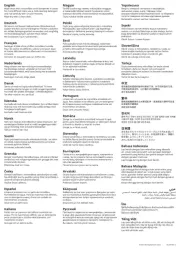
31 Juli 2025
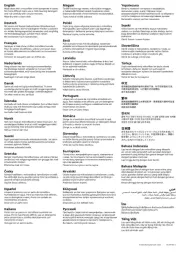
31 Juli 2025
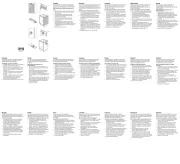
31 Juli 2025
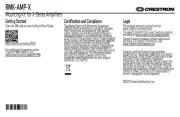
31 Juli 2025
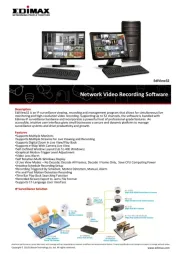
31 Juli 2025